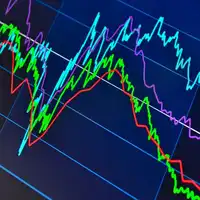
Choosing a Reputable Forex Broker
When selecting a forex broker, it’s crucial to consider the following factors:
Regulation: Look for brokers regulated by reputable authorities, such as the Financial Conduct Authority (FCA), the Australian Securities and Investments Commission (ASIC), or the Securities and Exchange Commission (SEC).
Reputation and reviews: Research the broker’s reputation and read reviews from other traders to gauge their reliability, customer support, and overall satisfaction.
Trading costs: Compare spreads, commissions, and other fees charged by different brokers to find competitive pricing.
Trading platforms and tools: Assess the trading platforms offered by brokers and ensure they have user-friendly interfaces, advanced charting tools, and fast execution speeds.
Customer support: Check if the broker provides responsive customer support to assist you in case of any issues or inquiries.
Opening a Trading Account
To open a forex trading account, follow these general steps:
Research and select a forex broker that meets your requirements.
Visit the broker’s website and locate the account opening section.
Fill out the application form, providing accurate personal information.
Submit any required identification documents, such as a passport or driver’s license, to verify your identity.
Fund your trading account using the available payment methods provided by the broker.
Once your account is approved and funded, you will receive login credentials to access the trading platform.
Types of Trading Platforms
Forex brokers offer various types of trading platforms to cater to different trading styles and preferences. Common types include:
MetaTrader 4 (MT4): A widely used platform known for its extensive charting capabilities, automated trading features, and a large community of traders offering custom indicators and expert advisors.
MetaTrader 5 (MT5): A more advanced version of MT4, offering additional features such as more order types, a wider range of markets, and improved technical analysis tools.
Web-based platforms: These platforms run directly in web browsers, allowing traders to access their accounts from any device with an internet connection, without the need to download or install software.
Mobile trading apps: Brokers provide mobile apps for iOS and Android devices, enabling traders to monitor the market, execute trades, and manage their accounts on the go.
Understanding Leverage and Margin
Leverage and margin are essential concepts in forex trading:
Leverage: Leverage allows traders to control larger positions with a smaller amount of capital. For example, with a 1:100 leverage, a $1,000 margin can control a position worth $100,000. While leverage amplifies potential profits, it also magnifies losses, so it must be used with caution.
Margin: Margin is the amount of money required to open and maintain a leveraged position. It acts as a security deposit and is a fraction of the total trade value. For instance, a 1% margin requirement on a $100,000 position means the trader needs $1,000 in margin.
Managing Risk in Forex Trading
Risk management is crucial in forex trading to protect your capital and ensure long-term success:
Use stop-loss orders: Set stop-loss orders for each trade to limit potential losses by automatically closing the trade if the market moves against your position.
Determine risk tolerance: Assess your risk tolerance level and avoid taking on excessive risk that could jeopardize your trading account.
Diversify your trades: Avoid putting all your eggs in one basket by diversifying your trades across different currency pairs and market conditions.
Use proper position sizing: Calculate the appropriate position size based on your risk tolerance, account size, and trade setup to ensure you’re not risking too much on a single trade.
Educate yourself: Continuously educate yourself about risk management techniques, trading strategies, and market analysis to make informed trading decisions.




